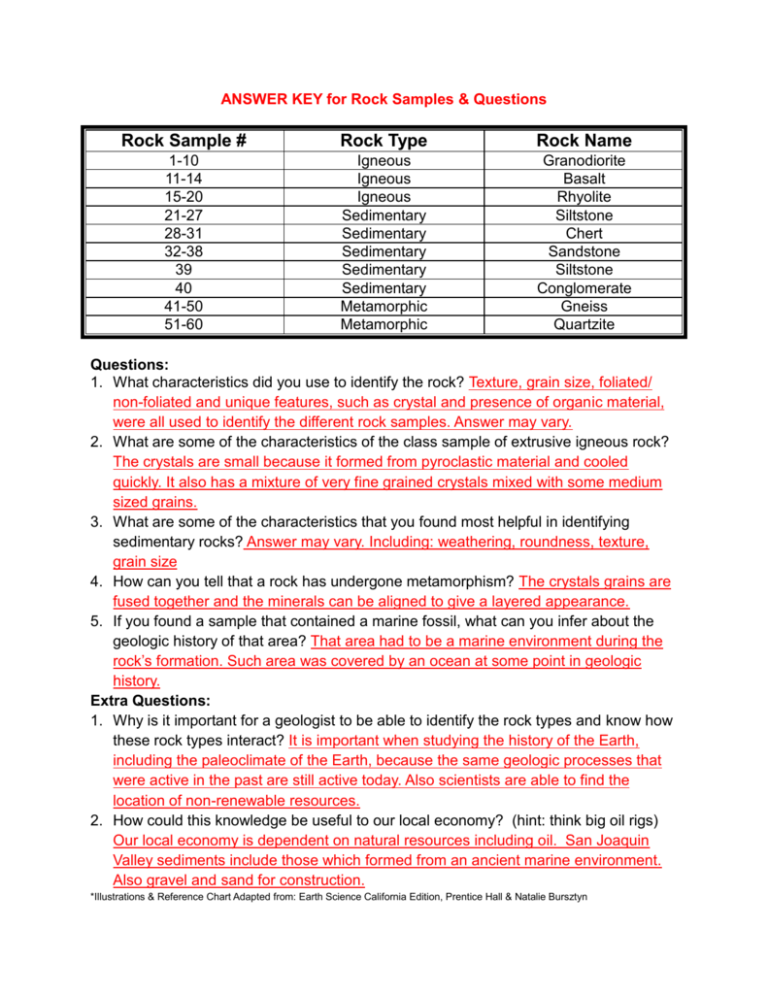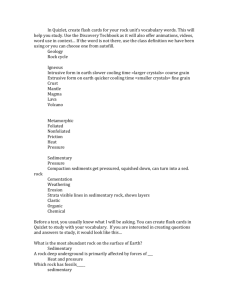Rocking It! Answer Key
advertisement

ANSWER KEY for Rock Samples & Questions Rock Sample # Rock Type Rock Name 1-10 11-14 15-20 21-27 28-31 32-38 39 40 41-50 51-60 Igneous Igneous Igneous Sedimentary Sedimentary Sedimentary Sedimentary Sedimentary Metamorphic Metamorphic Granodiorite Basalt Rhyolite Siltstone Chert Sandstone Siltstone Conglomerate Gneiss Quartzite Questions: 1. What characteristics did you use to identify the rock? Texture, grain size, foliated/ non-foliated and unique features, such as crystal and presence of organic material, were all used to identify the different rock samples. Answer may vary. 2. What are some of the characteristics of the class sample of extrusive igneous rock? The crystals are small because it formed from pyroclastic material and cooled quickly. It also has a mixture of very fine grained crystals mixed with some medium sized grains. 3. What are some of the characteristics that you found most helpful in identifying sedimentary rocks? Answer may vary. Including: weathering, roundness, texture, grain size 4. How can you tell that a rock has undergone metamorphism? The crystals grains are fused together and the minerals can be aligned to give a layered appearance. 5. If you found a sample that contained a marine fossil, what can you infer about the geologic history of that area? That area had to be a marine environment during the rock’s formation. Such area was covered by an ocean at some point in geologic history. Extra Questions: 1. Why is it important for a geologist to be able to identify the rock types and know how these rock types interact? It is important when studying the history of the Earth, including the paleoclimate of the Earth, because the same geologic processes that were active in the past are still active today. Also scientists are able to find the location of non-renewable resources. 2. How could this knowledge be useful to our local economy? (hint: think big oil rigs) Our local economy is dependent on natural resources including oil. San Joaquin Valley sediments include those which formed from an ancient marine environment. Also gravel and sand for construction. *Illustrations & Reference Chart Adapted from: Earth Science California Edition, Prentice Hall & Natalie Bursztyn






